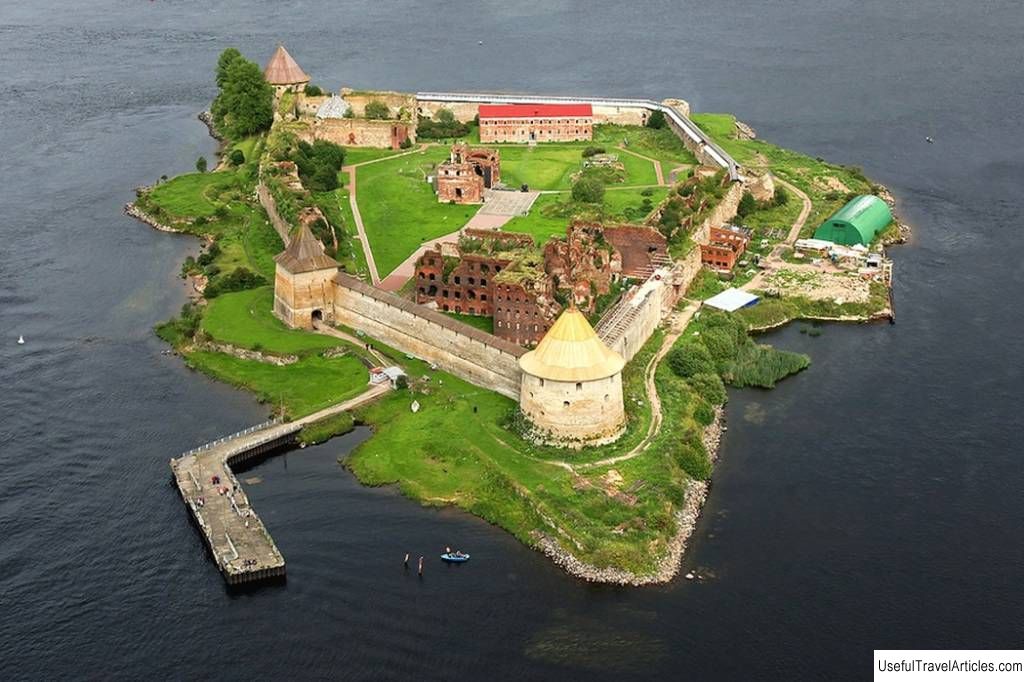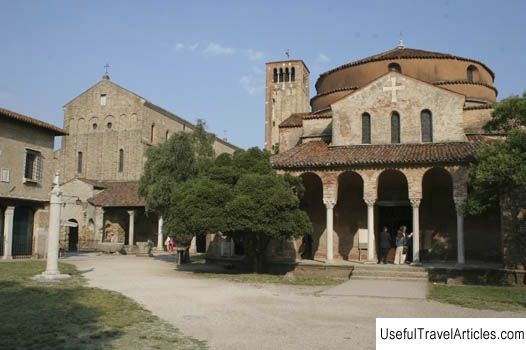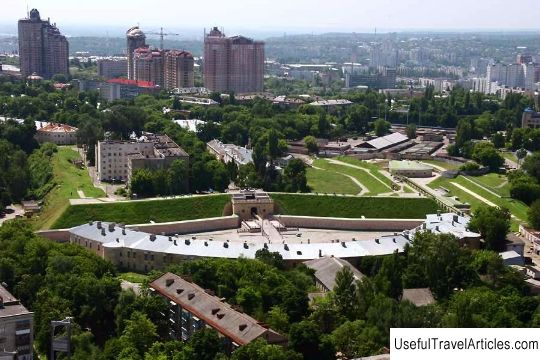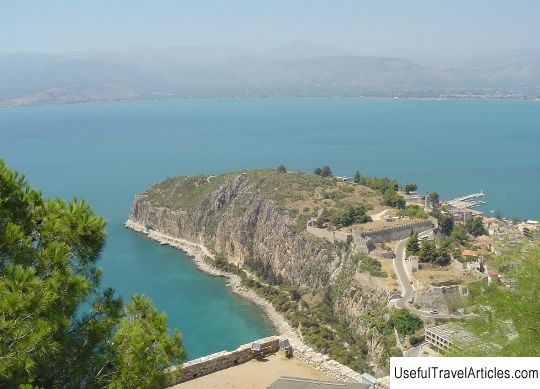Fortress Oreshek description and photo - Russia - Leningrad region: Shlisselburg
Rating: 8,4/10 (987 votes) 
Fortress Oreshek description and photos - Russia - Leningrad region: Shlisselburg. Detailed information about the attraction. Description, photos and a map showing the nearest significant objects. Photo and descriptionOreshek is one of the most beautiful and famous northern fortresses and looks picturesque both from water and from land. Here are preserved walls and towers of the 15th century and the remains of the church, turned into a war memorial. In the 17th-20th centuries, the fortress was used as a prison - the prison buildings where the most famous political prisoners were sitting have survived. FortressThe fortress was founded on an island called Orekhov - either because of its oblong shape, or because of the abundance of hazel that grew here. At this place in 1323 a peace agreement with the Swedes was concluded - and then a fortress was built here, first wooden, and since 1353 stone. Now in the fortress there is a memorial stone in memory of this world. The remains of the very first fortifications can now be seen under a special canopy - they were deeply embedded in the ground and were discovered already in the 20th century by archaeologists. In the 15th century the fortress was actually rebuilt. a series of wars with Sweden began with the use of artillery, so that all the northern fortifications of that time were actively rebuilt. It is believed that this was the first Russian fortress with so many towers. It was built according to all the rules of fortification art and occupied the entire territory of the island. The central part - citadel - was defended by three towers, and seven more were located along the perimeter. Now of all the towers, six have survived. Wooden tents over the towers and wooden floors were restored. In 1612, Oreshek was captured by the Swedes. He fell due to the fact that he was on the island: the defenders were simply starved to death, most of the garrison died from hunger. During the Northern War in 1702, Peter I recaptured it from the Swedes. After the victory, the king renamed the city Shlisselburg - "key-city". Prison Since the 18th century, Shlisselburg has lost its strategic importance and begins to be used as a political prison . Here the so-called Secret House is set up - a one-story building with several prison cells, which is located behind the inner walls, disguised even from inside the fortress. It was designed for the most difficult and uncomfortable prisoners. For example, it was here that the unfortunate Emperor John VI , the son of Anna Leopoldovna ousted by Elizabeth, was imprisoned. The Empress was not ready to kill the child for the sake of power - but imprisoned him forever in this secret prison. He became an "nameless prisoner", a Russian "iron mask": his name was never mentioned anywhere. But, unfortunately, rumors still leaked out - and this ruined him. Already under Catherine II, a conspiracy arose to return the legitimate sovereign to the throne, and while trying to liberate John VI was killed. The leader of the Bashkir uprising of the 17th century Batyrsha spent five years in Shlisselburg. He died when he threw himself with an ax in his hands at the guards. Several Decembrists were imprisoned here - after the sentence and before being sent to hard labor, they lived in the northern fortresses. Brothers Nikolai and Mikhail Bestuzhev, Alexey Yushnevsky, Ivan Pushchin and others were in Shlisselburg. A. Yushnevsky later recalled in letters that the Shlisselburg prison was the most terrible - much worse than the Peter and Paul Fortress. Many participants of the Polish uprisings were serving their sentences in the Shlisselburg Secret House. The most tragic story was the story of Valerian ukasinski. He took part in the Polish uprising of 1830 and after him spent 37 years in the fortress - either by personal order of Nicholas I, or simply being forgotten. After 37 years in the fortress they themselves did not know for what and for how long this man was imprisoned. He was allowed to walk only under Alexander II, and he was never allowed to see his family at least once. Now in the Secret House there is a museum exposition telling about the most famous of its prisoners, the atmosphere of the cells and the punishment cell is reproduced. By the middle of the 19th century, the political struggle intensified. The secret house was no longer enough for the increasing number of prisoners. In 1883, a new prison building was built, designed for 40 cells, and from the beginning of the 20th, new buildings began to be built. Shlisselburg became a central, central convict prison . Now the buildings of the XX century, significantly damaged during the war, are in ruins, and in the new prison of 1883 there is a museum exhibition telling about the famous prisoners of each of its cells. Several years were spent here Narodnaya Volya : Vera Figner, Nikolay Morozov, Mikhail Frolenko. An apple tree grows in the courtyard of the Secret House. This is a descendant of those trees that were once planted here by political prisoners: the only entertainment they were allowed was their own garden. Some were sent from here to hard labor - for example, Grigory Gershuni. Someone committed suicide - this is how Sophia Ginzburg was stabbed to death in 1891. executions took place here. It was in Shlisselburg that Alexander Ulyanov, Lenin's older brother, was shot. The place of his execution is marked with a commemorative sign. War Memorial In the center of the fortress there is one of the most impressive memorials dedicated to the Great Patriotic War. These are converted into a monument the ruins of the garrison church of St. John the Baptist . It was built in 1831 and was almost completely destroyed during the war. For 500 days, Shlisselburg withstood the siege and bombing - he defended the Road of Life, passing literally a few kilometers away, saving besieged Leningrad. Even then, a mass grave of those killed during the siege appeared in the fortress. In 1985, the ruins of the church were turned into a monument. Several sculptors and an architect worked on it. The center of the whole complex is the sculptural group "Oath" - the defenders of the fortress swear not to surrender. Now the John the Baptist Church is officially active. It was consecrated, and sometimes divine services are held on its ruins. Sights of the city There are several interesting sights in the city itself. This is the Museum of the History of Shlisselburg , located in one of the old factory buildings of the 19th century on Factory Island. It opened in 1995. There is no permanent exhibition, but thematic exhibitions devoted to the history of the city change regularly - the museum's collection contains more than six thousand exhibits. In the immediate vicinity of the fortress there is Cathedral of the Annunciation . The first Orthodox cemetery church appeared here simultaneously with the fortress itself - already in the XIV century. Under the Swedes, it was destroyed, and Peter I ordered to restore it. The current building of the temple was built in 1764. In Soviet times, the production workshop of the famous record producer "Melodia" was located here, and since 1990 the cathedral has been operating again. By now it has been completely renovated. The small warm St. Nicholas Church of 1770 and the Kazan Chapel belong to the same complex. In Shlisselburg there are also locks of the Staroladozhsky Canal , built in the 18th century. This was the path that connected the Volkhov and the Neva, bypassing the dangerous Ladoga Lake. It became the largest canal of the 18th century, not only in Russia, but throughout Europe. The canal was opened in 1731 and operated until the middle of the 19th century. The last reconstruction of the locks and the mouth of the canal was in 1836-1842. Since the end of the 19th century, the channel has ceased to be used, giving way to Novoladozhsky. Interesting factsOne of the Decembrists, Joseph Poggio , spent six whole years here. This was specifically asked by his father-in-law, fearing that his daughter would follow her husband to Siberia. In the end, her father set a condition for her - either she divorces and marries another, or Joseph will forever remain in the Shlisselburg singleton. She divorced. A monument to the most famous Polish prisoner of the fortress - V. Lukasinski . Notes
                      We also recommend reading Basilica of San Thome (San Thome Basilica) description and photos - India: Chennai (Madras) Topic: Fortress Oreshek description and photo - Russia - Leningrad region: Shlisselburg. |




